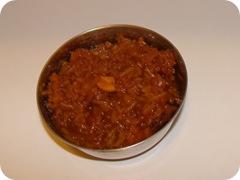Author: Mitch Albom
Awesome is just the word for this piece of work! I loved reading every word of this book and I would highly recommend it to everybody!
In concept it is similar to “Tuesdays with Morrie” and is a true story too. The author is asked by his rabbi if he would write his eulogy, to which the author has no choice but to agree. To accomplish that he must learn more about the Rabbi and so begin his tete-a-tetes with the Rabbi. With some hesitation he began this journey and little did he know how much he would learn on the way. He also comes across a pastor during this period with whom he gets associated and even though the Rabbi and the Pastor were so different – one was the leader of Jews and other that of Christians, one was a black and the other a white – there were so many similarities in them.
As the title says, it’s all about what is faith and what it can do; but not in a philosophical manner but in a more story-telling manner. There were so many dialogues in this book that were worth writing down but then I realized that if I did that I would be copying half the book in my post :). There is one that has left an indelible mark on my mind: the rabbi says to get happiness one must “Be satisfied. Be grateful”. So true! I always knew the satisfied part but on reading this line that it is so important to be grateful of what you have. It is only then you realize how much you have and the importance of it. How many of us thank God for having a wonderful and loving family? In fact for having a family? For a good job? The food that we eat and the house that we sleep in? For our five senses, two working hands and legs?
When I list them down, it looks like a laundry list and one would argue do we really need to list each and every thing? Well yes, we do. That’s the whole point. We take everything that we have for granted and keep wishing for/complaining about/comparing all those things that we don’t have. What we don’t realize is that there is a whole gamut of people out there who don’t even have what we have. Trust me - we’re all so lucky in what we have!
Ok coming back to the book :), as you would’ve realized this book is on a topic that is close to my heart – faith and is simply beautiful! I can go on and on praising it but I would rather that you read the book :).
Bottomline: Awesome book!! Must must read!

